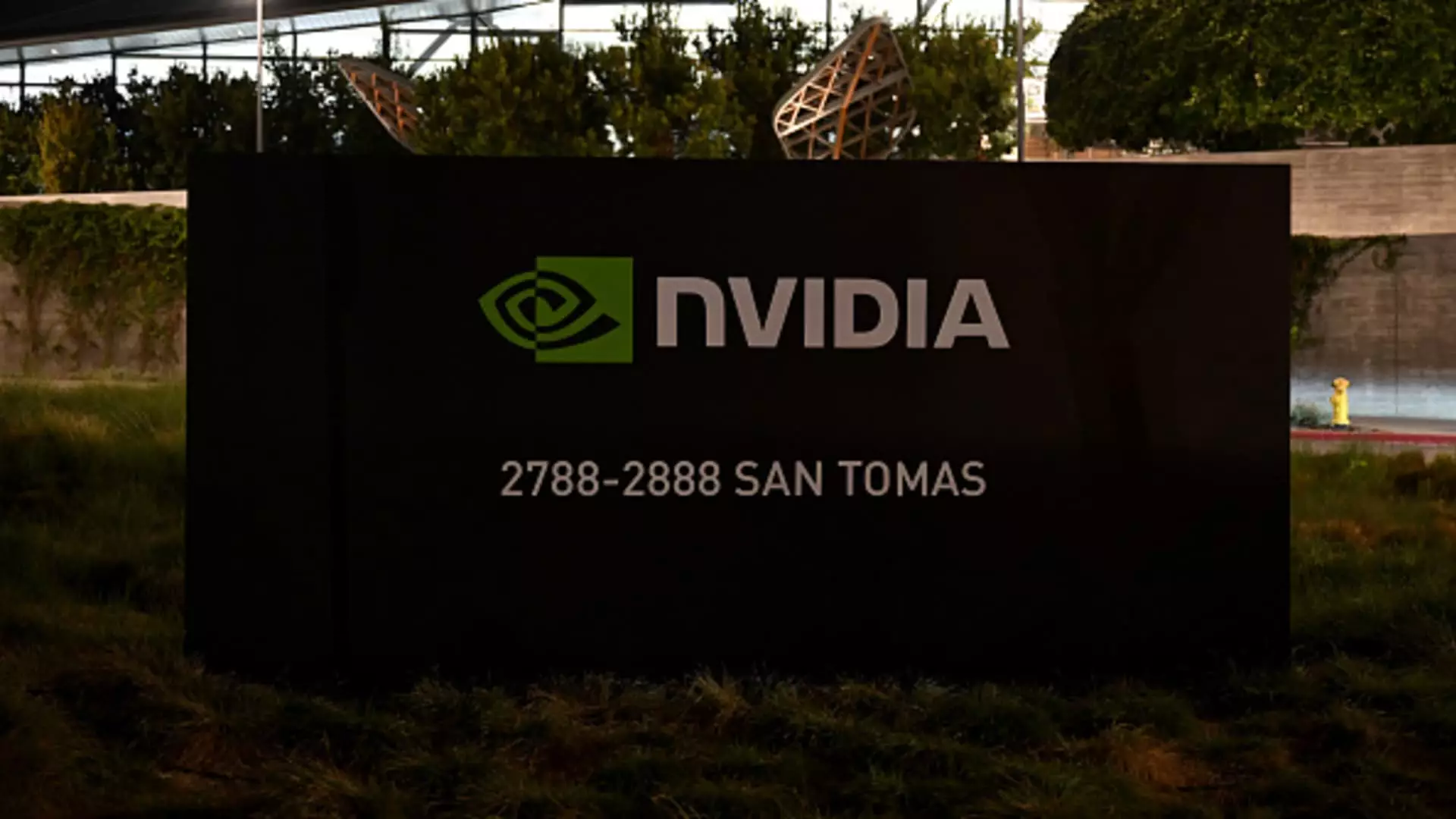In a notable shift within the AI investment landscape, recent remarks by Nvidia’s CEO Jensen Huang have sparked renewed enthusiasm among investors. His assertions at the Goldman Sachs Communacopia + Technology Conference epitomized the potential that generative AI holds for reshaping industries. Huang emphasized that generative AI transcends its role as a mere technological tool; rather, it represents a transformative skill set essential for the modern workforce. This perspective not only cements AI’s importance but also implies its centrality to future economic growth, drawing parallels to past technological revolutions.
The proposed billion-dollar opportunity in data centers serves as a cornerstone for this narrative. Huang’s bold claim signifies a fundamental optimism that the AI sector will not only sustain growth but escalate it in the coming years. Nvidia’s shares subsequently surged by over 8%, suggesting that optimistic sentiments resonated within the investment community. The broader market response was palpable, evidenced by double-digit rallies in AI and semiconductor companies such as Advanced Micro Devices, Marvell Technology, and Broadcom.
The immediate vision for the AI sector involves a multifaceted approach where various stakeholders play distinct yet interrelated roles. Portfolio managers are increasingly recognizing the imperatives present in the burgeoning market, exploring both short-term gains and long-term strategies. It’s noteworthy that Huang’s confidence lays the groundwork for manufacturing and operational scaling to meet expected demand. According to John Belton of Gabelli Funds, this optimism underscores a belief in sustainable growth within the industry—even as the market grapples with its inherent volatility.
Beyond Nvidia, firms like Advanced Micro Devices and Broadcom are positioned to capitalize on the changing landscape as demand for advanced graphics processing units (GPUs) and custom silicon chips continues to rise. This suggests a broader embrace of specialization within the hardware domain, allowing companies to thrive by catering to the surging requirements of platforms such as Meta Platforms that are seeking to leverage AI for innovative applications.
In assessing the long-term viability of market players, industry analysts like CFRA’s Angelo Zino have identified Apple as a critical participant within the AI ecosystem. Despite some skepticism around the recent launch of the iPhone 16—particularly in terms of its AI capabilities—Zino expresses confidence in Apple’s potential as a front-runner in AI applications, especially as more consumers adopt products like the Vision Pro headset. This points to a future in which user engagement with AI technologies expands, further deepening Apple’s foothold.
Simultaneously, firms like Dell and Applied Materials showcase the pivotal role that infrastructure and enterprise solutions play within the AI landscape. With an expected improvement in margins heading into the new year, Dell is poised to capture significant market share, while Applied Materials aligns itself strategically with the growing demand for manufacturing efficiency critical for AI development. This interconnected framework challenges the notion that AI’s benefits are solely confined to singular companies like Nvidia; rather, it highlights how a variety of stakeholders contribute to overall progress.
Despite the invigorating climate around AI, there are echoes of caution in the air. The rapid influx of companies vying for a piece of the AI pie raises concerns reminiscent of the dotcom bubble that burst in the early 2000s. This historical parallel warns investors to be judicious, recognizing that the real advancements might not just be occurring at publicly traded technology giants like Microsoft and Alphabet, but also among private enterprises subtly innovating in the background.
As the landscape continues to evolve, it becomes increasingly crucial for investors to differentiate between fleeting trends and genuine advancements. As Mark Malek of SiebertNXT aptly notes, “What is lurking in the shadows” may dictate the future more than the often-highlighted public companies. This calls for a more nuanced understanding of the AI sector: one that not only celebrates current achievements but also critically assesses the sustainability of these innovations.
While Nvidia’s leadership highlights the promise of generative AI as a transformative force in multiple sectors, it also serves as a clarion call for stakeholders to engage with caution and strategic foresight. The evolving dynamics of market participation—from established giants to competitive newcomers—offer a kaleidoscope of opportunities and challenges. Investors must navigate this complex terrain, keenly aware of both the potential rewards and the risks that accompany rapid technological evolution. As this vibrant sector continues to develop, maintaining a balance of enthusiasm tempered by prudence will be imperative for sustained success.

Leave a Reply